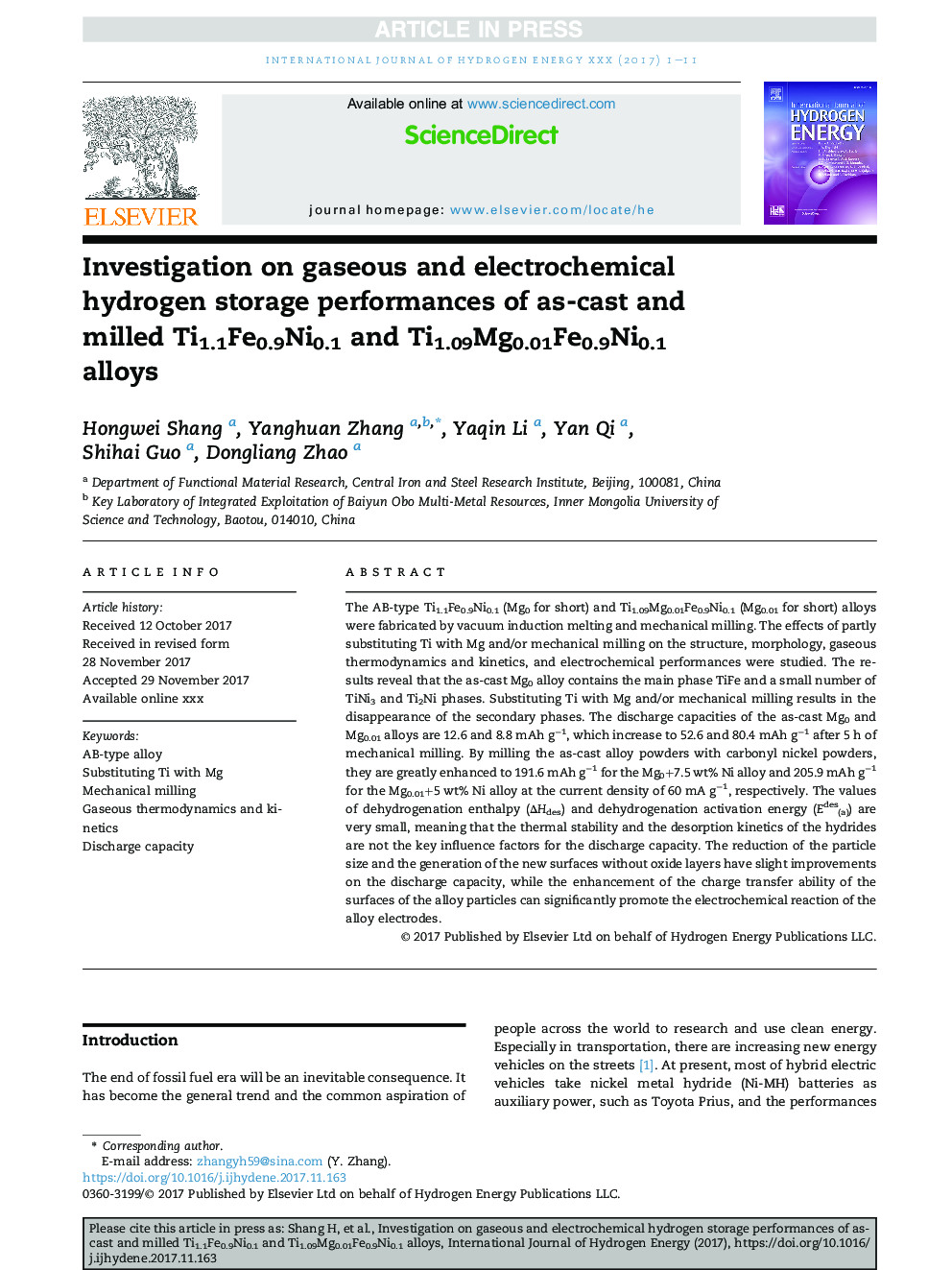| Article ID | Journal | Published Year | Pages | File Type |
|---|---|---|---|---|
| 7708364 | International Journal of Hydrogen Energy | 2018 | 11 Pages |
Abstract
The AB-type Ti1.1Fe0.9Ni0.1 (Mg0 for short) and Ti1.09Mg0.01Fe0.9Ni0.1 (Mg0.01 for short) alloys were fabricated by vacuum induction melting and mechanical milling. The effects of partly substituting Ti with Mg and/or mechanical milling on the structure, morphology, gaseous thermodynamics and kinetics, and electrochemical performances were studied. The results reveal that the as-cast Mg0 alloy contains the main phase TiFe and a small number of TiNi3 and Ti2Ni phases. Substituting Ti with Mg and/or mechanical milling results in the disappearance of the secondary phases. The discharge capacities of the as-cast Mg0 and Mg0.01 alloys are 12.6 and 8.8Â mAh gâ1, which increase to 52.6 and 80.4Â mAh gâ1 after 5Â h of mechanical milling. By milling the as-cast alloy powders with carbonyl nickel powders, they are greatly enhanced to 191.6Â mAh gâ1 for the Mg0+7.5Â wt% Ni alloy and 205.9Â mAh gâ1 for the Mg0.01+5Â wt% Ni alloy at the current density of 60Â mAÂ gâ1, respectively. The values of dehydrogenation enthalpy (ÎHdes) and dehydrogenation activation energy (Edes(a)) are very small, meaning that the thermal stability and the desorption kinetics of the hydrides are not the key influence factors for the discharge capacity. The reduction of the particle size and the generation of the new surfaces without oxide layers have slight improvements on the discharge capacity, while the enhancement of the charge transfer ability of the surfaces of the alloy particles can significantly promote the electrochemical reaction of the alloy electrodes.
Keywords
Related Topics
Physical Sciences and Engineering
Chemistry
Electrochemistry
Authors
Hongwei Shang, Yanghuan Zhang, Yaqin Li, Yan Qi, Shihai Guo, Dongliang Zhao,
